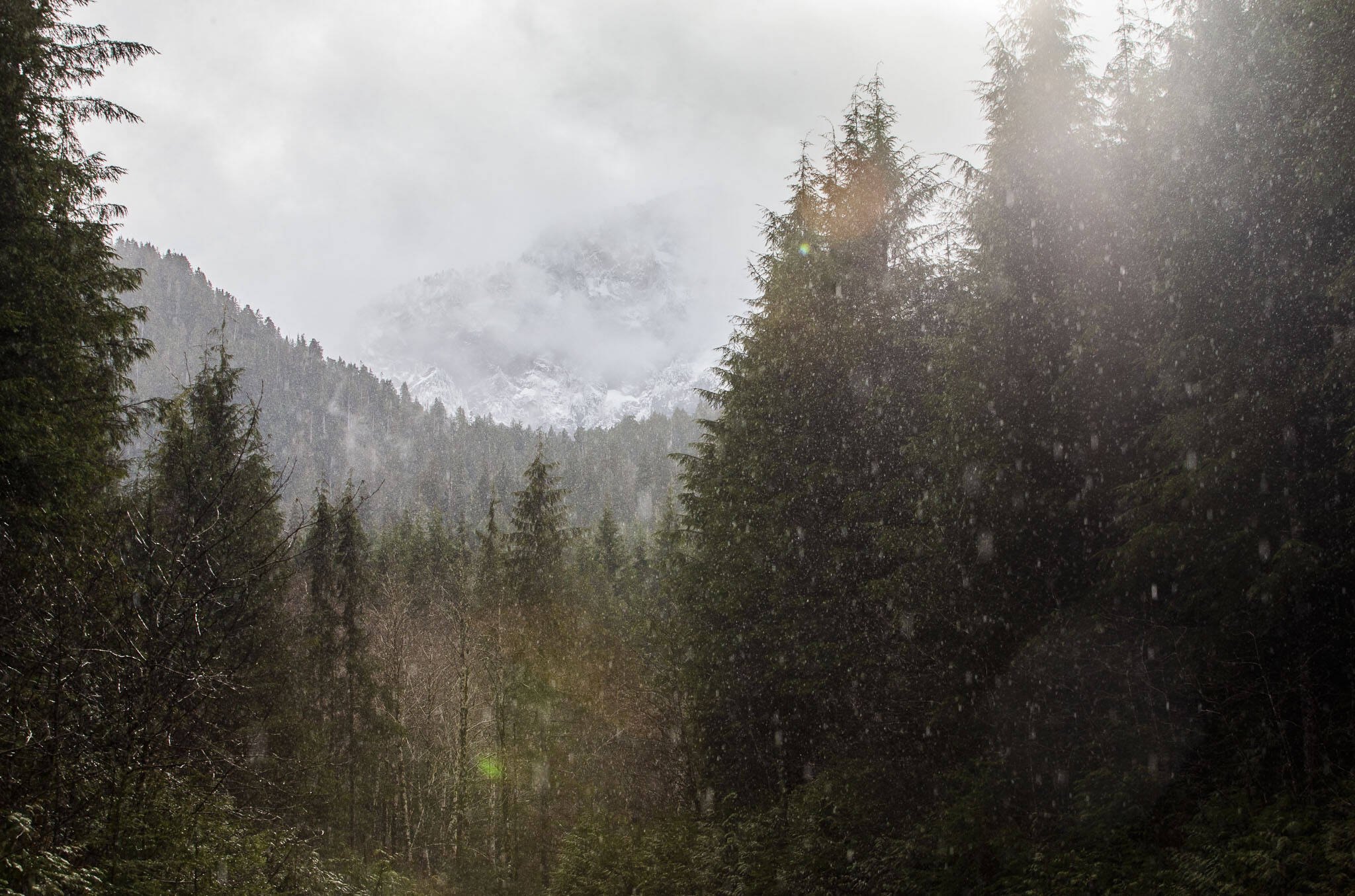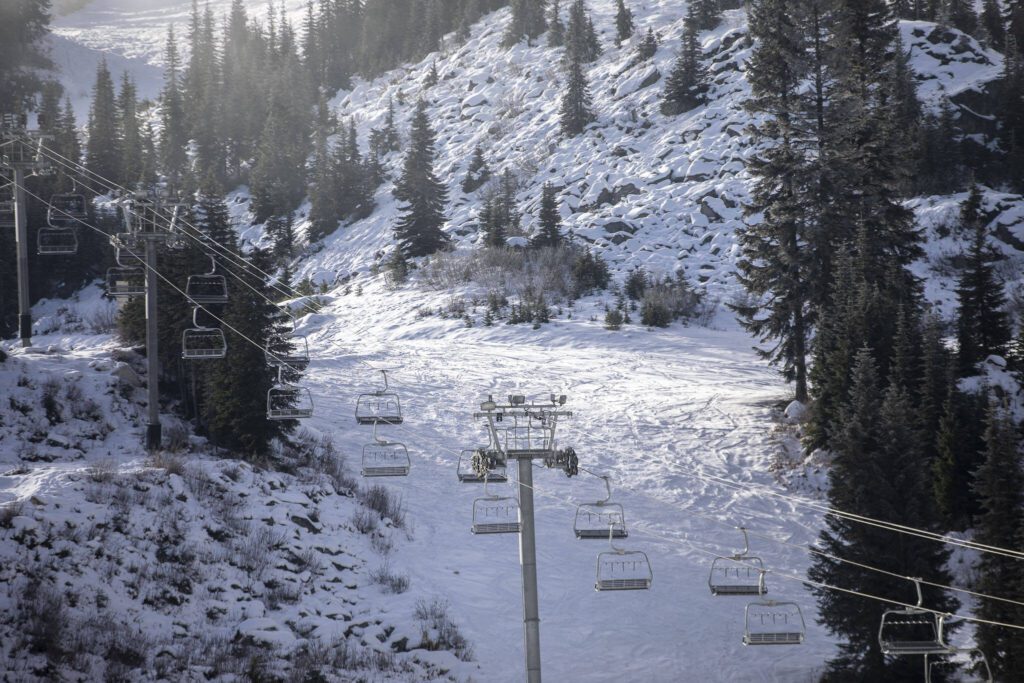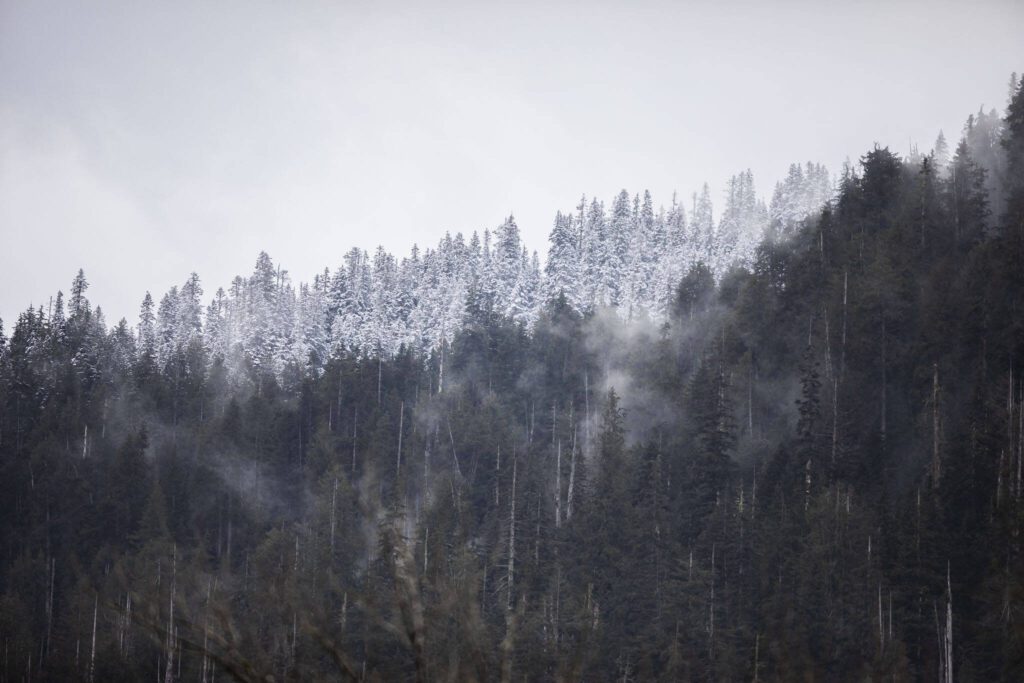EVERETT — Mountain snowpack levels in the Cascade Mountains in Snohomish County are at roughly 60% normal, while those gazing across Puget Sound can see the Olympics are at less than a third of what’s considered typical.
Much of the Pacific Northwest is in what’s called a “snow drought” meaning snowfall has been well below historic norms. Much of the region depends on mountain snowfall for water and hydropower throughout the year.
Across the broader region, 80% of weather stations in the West were below normal “snow water equivalent” as of this week. SWE describes how much liquid water is in the snow, and it’s used to estimate how much water regions will have as snow melts.
“Our snow is about half as good as it normally is,” said Karin Bumbaco, the state’s deputy climatologist.
Parts of Snohomish County were in drought stage last summer. In July, the county received half of its normal precipitation. The El Nino climate cycle, which is active this year, leads to warmer and drier weather in fall and winter.
“During El Nino, it’s a pretty sure bet that we’re going to have a warm winter in Washington and that can contribute to the higher elevations seeing rain rather than snow,” Bumbaco said. “I’m not totally surprised we’re seeing some snow drought in Washington this winter.”
She added: “I think to the extent we’re seeing it already is a bit, I’m disappointed that it’s as bad as it is, I guess.”
Stored water becomes more important. Drinking water, irrigation, recreation and fish migration all depend on mountain-fed streams.
Lose water in the summer and the problems quickly cascade.
‘It stretches our ability’
Snowpack helps feed another major usage of water: power.
The Snohomish County Public Utility District is the 12th-largest publicly owned utility in the nation. It serves over 370,000 customers and has a generating capacity of 132 megawatts.
Almost 77% of PUD’s power is purchased from Bonneville Power Administration, a federal entity operating 31 hydroelectric dams in the Columbia Basin. It has a couple other generation methods, including nuclear, solar and wind. About 7% of PUD’s power comes from its own hydroelectric dams, including the Jackson Hydro Project at Spada Lake, a reservoir.
Snowpack does affect power operations, wrote Scott Spahr, PUD manager of generation operations and engineering, in an email.
Think of snowpack as “precipitation with storage built in,” he wrote.
“Our basin gets about three times the amount of precipitation (rain or snow) in a year as what the reservoir (Spada Lake) can hold in volume,” Spahr wrote. “We get the bulk of that precipitation during the Fall/Winter/Spring, and we operate off of what we’ve stored for the summer.”
When snow falls, it gives PUD something valuable — time. If it comes as rain, they have no choice but to generate power because if they do not, the reservoir would spill over and flood.
Spada Lake is kind of like a battery that kicks in during summer and early fall, when “we’re generating or releasing more flows than are coming into the basin,” Spahr wrote.
“When the snowpack melts earlier (say Spada Lake fills by May instead of end of June), it stretches our ability to meet those demands through the summer and fall until we get precipitation again,” Spahr wrote. “That’s because we’re using that given volume we stored, but spreading it over four or more months instead of three.”
As energy needs rise in the summer due to warmer temperatures brought on my climate change, as well as population growth, bridging the dry months becomes more challenging.
“We are blessed to live in a region where the bulk of our electricity comes from hydroelectric supplies,” Spahr wrote.
But “as a consequence, the Northwest is particularly exposed to a change in trend as its effects can be collective across the region,” he wrote.
Basically, the reliance on hydroelectric is a blessing — but changes to water flow and snowpack also impact power operations.
During the cold snap around Martin Luther King Jr. Day last month, river conditions on the Columbia River were below average at the same time as aa need to save water for fish projects later in the year, wrote Aaron Swaney, a PUD spokesperson.
However, due to the cold, there was a higher-than-normal need to generate power. Wind and solar were not producing much electricity at the time.
“In a normal year, say the past three or four years, the federal system (BPA) could have generated more energy through the event and been comfortable knowing more water would be coming later via snowpack melt prior to summer,” Swaney said. “That isn’t true this year with snowpack numbers lower than average.”
The PUD is BPA’s largest customer.
“The result was higher-than-average prices on energy markets,” Swaney wrote.
‘Building snowpack’
Compounding the low snowpack this year is last year’s dry summer.
Last year, May and June were the fourth-warmest and 11th-driest period in Washington since 1895. Even now, most of the Cascades remain in a mild drought, including a slim corner of Snohomish County, according to the U.S. Drought Monitor.
Bumbaco said an unseasonably warm December 2023 and a warm end to January led to “rain on snow” events, where liquid water — and warmer temperatures — melted much of the meager snowpack.
A combination of heavy rain, warm air and melting snow was to blame for widespread December flooding in Snohomish County, which forced some residents to evacuate and some roads to close for days in the Stillaguamish River basin.
Flooding like that is usually due to the rain more than snow, Bumbaco said.
“But (snow) is a factor and it can be really tough to model that in our weather forecasts and and our hydrological models,” she added.
Speaking of forecasts, is there a hope things could turn around and we add more snow?
“Right now the temperatures are slightly below normal, but we’re not getting significant storms,” said Robert Hahn, an avalanche meteorologist with the Northwest Avalanche Center. “Right now we’re just getting an inch or two of snow every day on the west slopes of the Cascades. We just haven’t had a good combination of consistent cold temperatures and consistent moisture.”
The Cascades normally get several storms a week, Hahn said, but this year the energy for those storms is either going south to California or stuck offshore. Either way, it’s not bringing snow to the mountains.
One of the brighter spots on the map? Stevens Pass, which was at roughly three-quarters of normal snowpack this week, just outside the Snohomish County line.
That said, there’s still some time. The snowpack usually peaks in March or April, he said.
“We will be building snowpack,” Hahn said. “It’s just, are we building it as fast as we typically do at this time of year? My gut is that we’ll build it a little more slowly.”
Jordan Hansen: 425-339-3046; jordan.hansen@heraldnet.com; Twitter: @jordyhansen.
Talk to us
> Give us your news tips.
> Send us a letter to the editor.
> More Herald contact information.




























